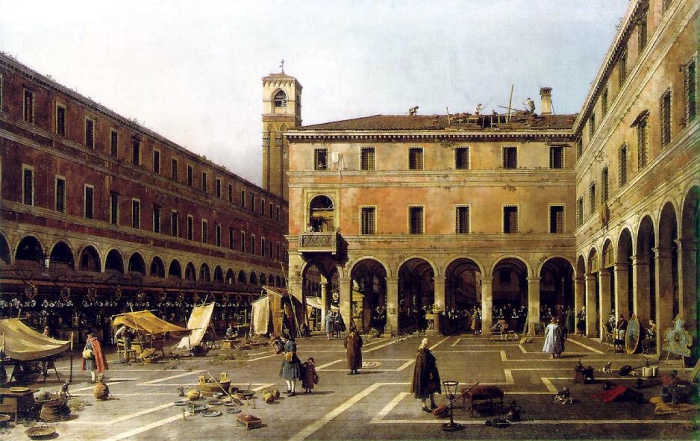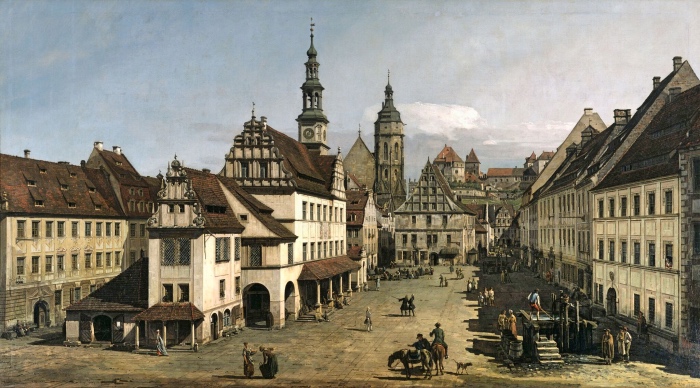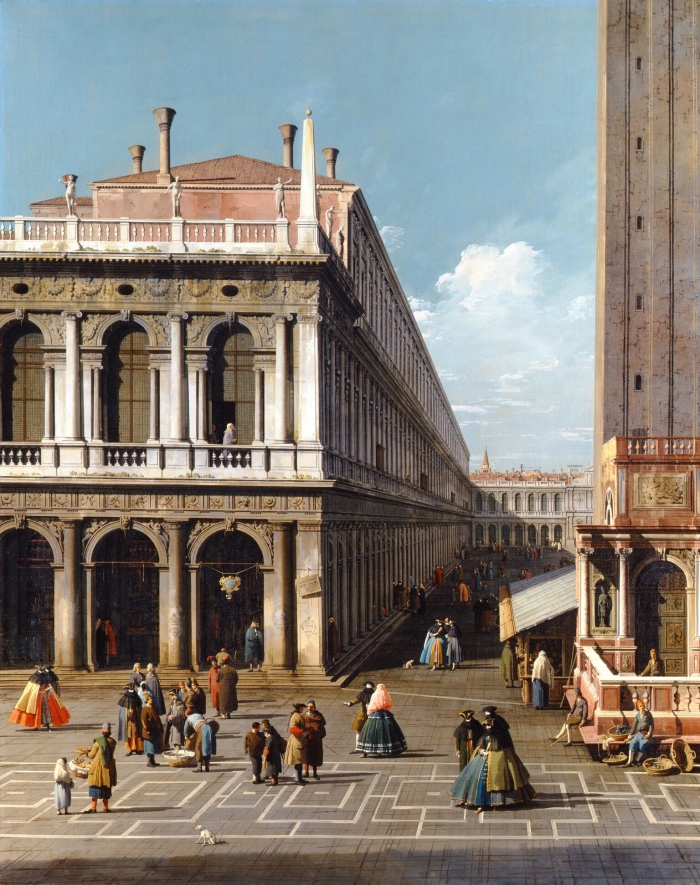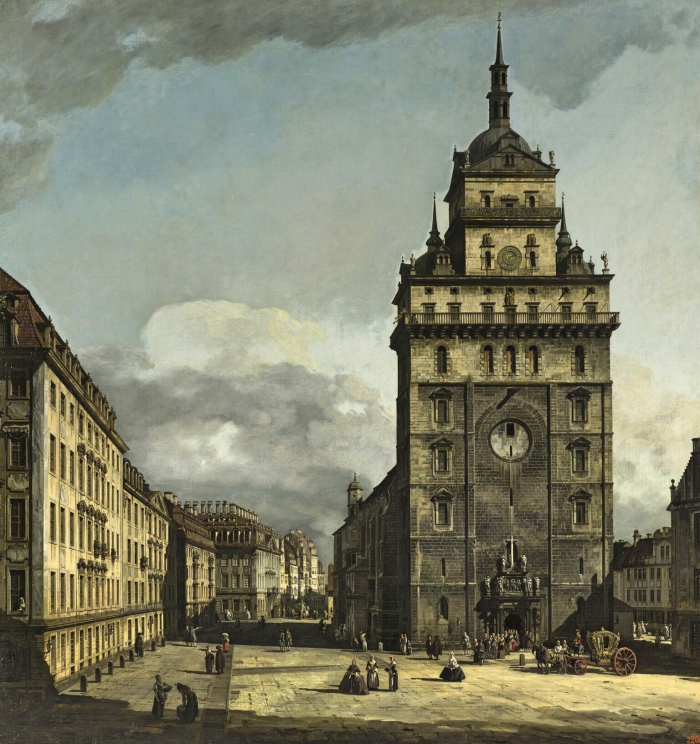
Il Campo di Rialto, Canaletto. Image source: Wikipedia.it
CITYSCAPE PAINTING
One of the most fascinating events in the European painting is the birth and development of Vedutismo (cityscape painting) in the 18th century, of which the Venetian painter Giovanni Antonio Canal, known as Canaletto, was the main proponent.
His vedute (views) of Venice and London, as well were sought-after mainly by Anglo-Saxon collectors, who loved urban landscapes, and found in Canaletto’s works detailed and realistic images of what they could see and live in the 18th-century cities.
READ ALSO: Things to see in Venice.

Bernardo Bellotto. Pirna dal villaggio dei pescatori (1753-1754).
Urban landscapes had been a subject painted many times over the centuries, but always as a background; whereas in the 18th century nature and city became the only protagonists of paintings, and they depicted life goes by with a great realism. Canaletto’s vedute are the richest in details, giving the spectator the feeling that he’s looking at a real moment, because in addition to the description of the landscapes, the artist adds touches of colours which give the painting that light that makes the atmosphere of a city such as Venice unique.
Vedutismo (cityscape painting) can be considered to be the forerunner of photography, and in fact the instrument used by Canaletto and the vedutisti (painters of vedute) to paint such detailed paintings is considered to be the precursor of camera before, and movie camera later.
It’s the camera obscura, I saw at the Museum of Precinema in Padua, and that is the secret of Canaletto’s success.
By using a portable wooden box which, through some mirrors inside it, reproduced the images of the landscape the artist could see, he could draw a sketch by tracing the projected image, and then complete the painting in his studio.
This system, together with an absolute mastery of use of perspective, makes vedute realistic, and captures in an eternal moment the life going by.

Bernardo Bellotto

Canaletto

Bernardo Bellotto
READ ALSO: Mark’s square: a day in the heart of Venice.


Magnifico !
Il mio preferito è Canaletto, ma ognuno ha la sua particolarità. 🙂